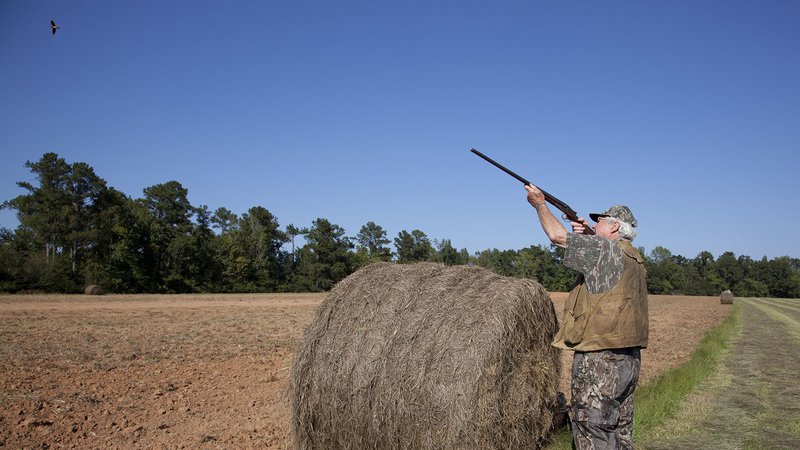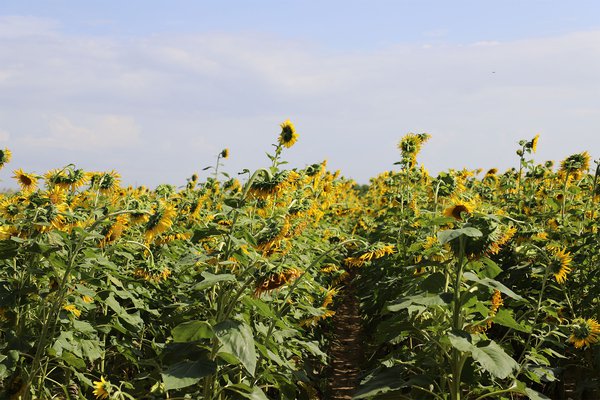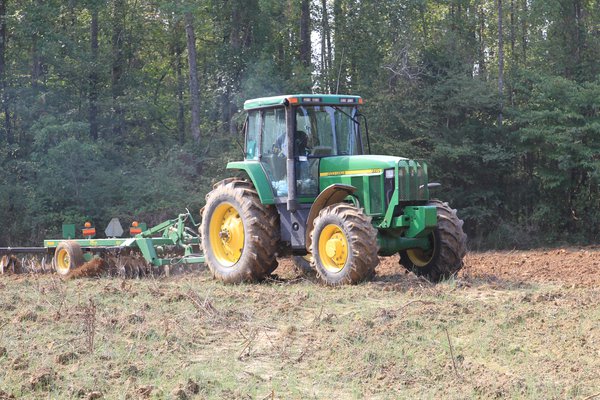Attract doves to your field for opening day, but be mindful of baiting laws
ON 08-17-2022

Aug. 17, 2022
Randy Zellers
Assistant Chief of Communications
LITTLE ROCK – Dove season opens September 3. Coincidentally, that happens to be the first Saturday of college football for most of the country. Just like football, an opening day blunder can set the tone for the season. Check fields for any evidence of baiting before hunting, so your midday dove-field tailgate party is full of good memories cheering on your team instead of paying fines for violating federal regulations.
According to federal regulations migratory game birds may not be hunted or killed with the aid of bait. Bait is defined as salt, grain or other feed that has been placed, exposed, deposited, distributed or scattered to attract game. And it’s not just the bait currently on the ground hunters should be aware of. An area is considered baited for 10 days after the complete removal of all bait, so it’s important to ask landowners, guides and caretakers if the field was baited and to physically inspect the field before hunting.
Baiting regulations regarding doves differ slightly than regulations for waterfowl. Natural vegetation may be manipulated in any way to attract all migratory game birds, but planted crops are a different ballgame.

Most dove hunters prefer sitting in a field of freshly mowed sunflowers or millet with strips of unmowed crops to provide cover. While mowing agricultural crops is legal for dove hunting, it’s a major no-no if you shoot at waterfowl.
According to Luke Naylor, chief of wildlife management for the Arkansas Game and Fish Commission, the situation usually does not cause too much concern, as any seeds exposed for the dove opener are either eaten or sprouted by regular duck season, but the early teal season and early Canada goose season can tempt hunters with targets of opportunity.
“Sometimes after a heavy rain, the fields will have standing water over the seeds provided for the doves, which could attract teal and geese,” Naylor said. “But that area is considered baited when it comes to waterfowl.”
Naylor also offers a bit of advice for land managers and hunters who lost their crops during this summer’s drought conditions or saw an infestation of army worms or other destructive pests. Top-sowing wheat is a legal and effective way to attract doves, as long as it is done according to accepted agricultural standards. The wheat is used for soil stabilization, a normal agricultural practice, and for wildlife food plots. The University of Arkansas Division of Agriculture lists the maximum amounts and planting times allowed for many top-sown seeds at https://www.uaex.uada.edu/publications/pdf/FSA-9082.pdf.
“You shouldn’t ever have to get anywhere near the maximum amount of seed allowed,” Naylor said. “And you really don’t want to top-sow wheat until you’re close to opening day if you want to hunt doves over it.”

Naylor says hunters often top-sow a dove field weeks in advance of dove season so the birds have time to find the seeds and congregate. That’s great if you have multiple fields to stagger planting effort, but if you only have one small field, holding off until the week of the opener may be best.
“If we see some rain before opening weekend, the seed will sprout and cease to attract the birds,” Naylor said. “You’re better off in some cases to wait a little closer to opening day.”
Recent News

Arkansas Wildlife Weekly Fishing Report
Jul. 10, 2025

Lonoke aquaculturist named to AGFC
Jul. 10, 2025
Subscribe to Our Weekly Newsletter E-mails
Don’t miss another issue. Sign up now to receive the AGFC Wildlife Weekly Newsletter in your mailbox every Wednesday afternoon (Waterfowl Reports are published weekly during waterfowl season and periodically outside the season). Fishing Reports arrive on Thursdays. Fill in the following fields and hit submit. Thanks, and welcome!
